MANIAC MANSION
Hey wonderful people of steemit. Its your humble gamer @adexola on another game review today. Special shout outs to my readers.. It means a lot to me.
Maniac Mansion i hope you will enjoy the game because me i love it.
The sport used to be conceived in 1985 with the aid of Ron Gilbert and Gary Winnick, who sought to tell a comedic story headquartered on horror film and B-film clichs.
They mapped out the task as a paper-and-pencil recreation earlier than coding commenced.
At the same time earlier adventure titles had relied on command lines, Gilbert disliked such programs, and he developed Maniac Mansion's easier point-and-click on interface as a replacement.
To speed up creation, he created a game engine known as SCUMM, which was used in many later LucasArts titles.
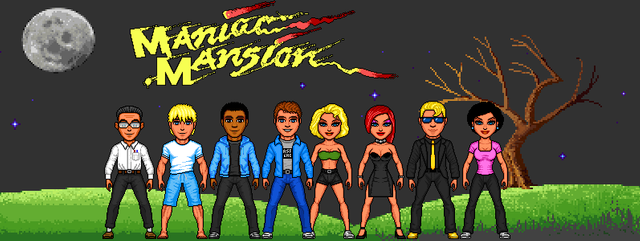
After its unlock, Maniac Mansion was ported to a few platforms. A port for the Nintendo enjoyment procedure had to be transformed closely, in line with complaints via Nintendo of the usa that the game was inappropriate for youngsters.
Maniac Mansion used to be severely acclaimed: reviewers lauded its photos, cutscenes, animation and humor. Writer Orson Scott Card praised it as a step toward "computer video games valid storytelling artwork."
It influenced countless photograph adventure titles, and its point-and-click interface grew to become a regular characteristic in the style.
The game's success solidified Lucasfilm as a major rival to journey recreation studios similar to Sierra on-line.
In 1990, Maniac Mansion used to be adapted into a 3-season tv sequence of the same title, written with the aid of Eugene Levy and starring Joe Flaherty.
A sequel to the game, entitled Day of the Tentacle, was launched in 1993.
A horizontal rectangular video game screenshot that is a digital representation of a home room.
Two human characters stand beside a inexperienced tentacle in the core of the room. Beneath the scene is a record of commands.
Bernard and Dave talk over with the green tentacle in the mansion. The sport shows speak above the scene and the factor-and-click command interface under it.
Maniac Mansion is a image journey game in which the player makes use of a factor-and-click on interface to guide characters by means of a two-dimensional game world and to clear up puzzles.
Fifteen action commands, such as "stroll To" and "free up", could also be chosen with the aid of the participant from a menu on the reveal's curb 1/2.
The player begins the sport with the aid of picking two out of six characters to accompany protagonist Dave Miller.
Each and every character possesses unique competencies: for instance, Syd and Razor can play musical devices, even as Bernard can repair home equipment.
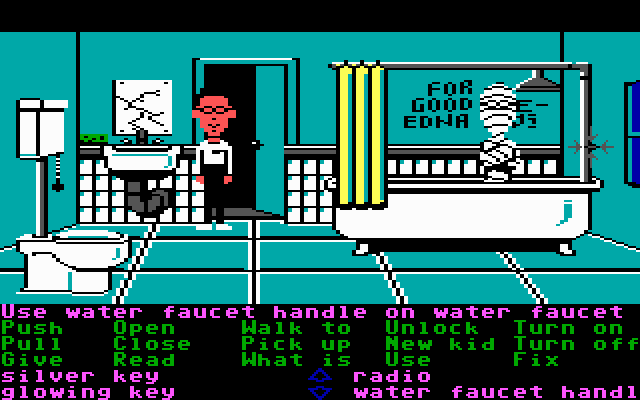
The sport could also be completed with any combination of characters; however, seeing that many puzzles are solvable best through exact characters, distinctive paths must be taken based on the group's composition.
Maniac Mansion points cutscenes, a word coined via Ron Gilbert, that interrupt gameplay to strengthen the story and inform the player about offscreen activities.
the sport takes position in the mansion of the fictional Edison loved ones: Dr. Fred, a mad scientist; Nurse Edna, his spouse; and their son bizarre Ed.
residing with the Edisons are two big, disembodied tentacles, one pink and the other green.
The intro sequence indicates that a sentient meteor crashed near the mansion twenty years earlier; it brainwashed the Edisons and directed Dr. Fred to obtain human brains for use in experiments.
The game starts as Dave Miller prepares to enter the mansion to rescue his girlfriend, Sandy Pantz, who used to be kidnapped by Dr. Fred.
Apart from the fairway tentacle, the mansion's inhabitants are hostile, and will throw the participant characters into the dungeon, in some occasions, kill them if they see them.
When a personality dies, the player ought to decide on a alternative from the unselected characters; and the sport ends if all characters are killed.
Maniac Mansion has five feasible endings, centered on which characters are chosen, which live to tell the tale, and what the characters accomplish.
A brown-haired man with a light brown plaid shirt stands in the back of a podium against a black background.
Ron Gilbert (pictured) co-wrote and co-designed Maniac Mansion with Gary Winnick; they were each puzzle and photo adventure sport fans.
Maniac Mansion used to be conceived in 1985 when Lucasfilm games employees Ron Gilbert and Gary Winnick have been assigned to create an common recreation. Gilbert had been hired the previous 12 months as a programmer for the sport Koronis Rift.
He befriended Winnick over their similar tastes in humor, film, and television.
Company management furnished little oversight in the creation of Maniac Mansion, a trend to which Gilbert credited the success of several of his games for Lucasfilm.
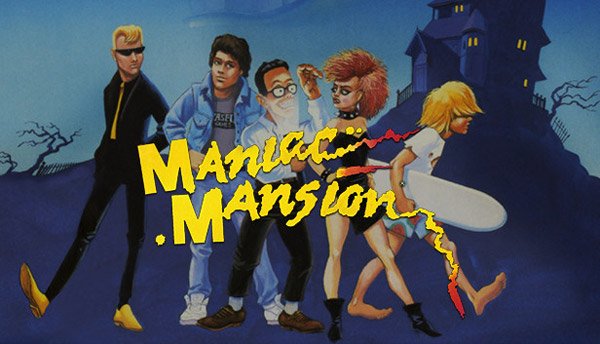
Gilbert and Winnick co-wrote and co-designed the undertaking, but they labored separately as well: Gilbert on programming and Winnick on visuals.
As both of them enjoyed B horror movies, they determined to make a comedy-horror sport set in a haunted residence.
They drew thought from a film whose name Winnick could no longer consider. He described it as "a ridiculous teen horror film", where teens within a building had been killed one at a time without any suggestion of leaving.
This film, mixed with clichs from general horror films equivalent to Friday the thirteenth and A Nightmare on Elm avenue, grew to become the basis for the game's atmosphere.
Early work on the game improved organically: in keeping with Gilbert, "very little was once written down. Gary and i simply talked and laughed lots, and out it got here."
Lucasfilm games relocated to the steady apartment at Skywalker Ranch throughout Maniac Mansion's idea period, and the ranch's foremost apartment used to be used as a mannequin for the mansion.
A number of rooms from the principal condo bought specific reproductions within the recreation, reminiscent of a library with a spiral staircase and a media room with a large-monitor tv and grand piano.
Story and characters had been a primary challenge for Gilbert and Winnick.
The pair situated the game's forged on acquaintances, family members, pals, and stereotypes.
For instance, Winnick's lady friend Ray was the suggestion for Razor, at the same time Dave and Wendy have been centered, respectively, on Gilbert and a fellow Lucasfilm worker named Wendy.
In keeping with Winnick, the Edison family was formed after characters from EC Comics and Warren Publishing magazines.
The sentient meteor that brainwashes Dr. Fred was once encouraged through a segment from the 1982 anthology film Creepshow.
A person-consuming plant, much like that of Little shop of Horrors, was incorporated as good.
The developers sought to strike a stability between anxiety and humor with the sport's story.
A significant white house with black roofing in front of green hills and forests.
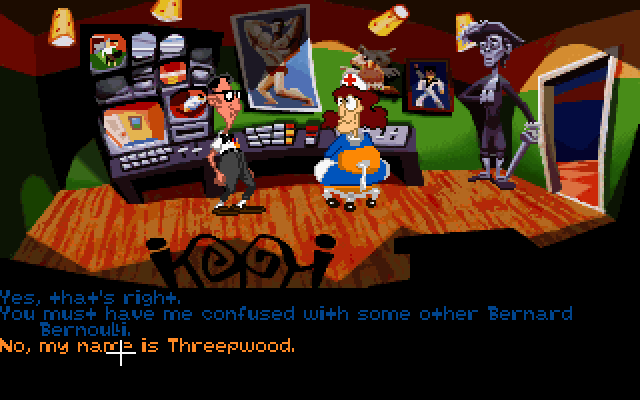
The foremost condo at Skywalker Ranch influenced the design of Maniac Mansion's environment.
At the beginning, Gilbert and Winnick struggled to pick a gameplay style for Maniac Mansion.
At the same time touring household over Christmas, Gilbert noticed his cousin play King's Quest: Quest for the Crown, an adventure sport by Sierra on-line.
Although he was once partial to text adventures, this was once Gilbert's first expertise with a image journey, and he used the vacation to play the sport and familiarize himself with the layout.
Hence, he made up our minds to develop his and Winnick's strategies into a image adventure game.
Maniac Mansion's story and structure have been designed earlier than coding commenced.
The mission's earliest incarnation used to be a paper-and-pencil board game, wherein the mansion's ground plan was used as a game board, and playing cards represented activities and characters.
strains connected the rooms to illustrate pathways during which characters might journey.
Strips of cellulose acetate had been used to map out the sport's puzzles by tracking which items worked collectively when utilized by certain characters. Impressed with the aid of the map's complexity, Winnick integrated it within the final sport as a poster hung on a wall.
Considering the fact that every character contributes distinct skills and resources, the pair spent months working on the event combos that could arise.
This elevated the sport's creation time beyond that of earlier Lucasfilm games projects, which almost led to Gilbert's firing.
The game's dialogue, written through David Fox, was once no longer created except after programming had begun.
Gilbert began programming Maniac Mansion in 6502 assembly language, but he swiftly made up our minds that the mission used to be too giant and complex for this system.
He determined that a new sport engine would need to be created.
Its coding language used to be at first planned to be LISP-encouraged, but Gilbert opted for one similar to C.
Lucasfilm worker Chip Morningstar contributed the base code for the engine, which Gilbert then developed on.
Gilbert hoped to create a "method that would be used on many journey games, chopping down the time it took to make them".
Maniac Mansion's first six-to-9 months of construction had been committed mostly to engine development.
the game was developed around the Commodore sixty four home computer, an 8-bit approach with handiest 64 KB of reminiscence.
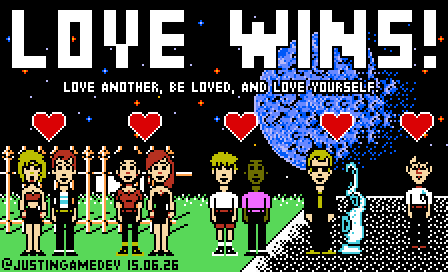
The workforce desired to incorporate scrolling monitors, however as it was once ordinarily impossible to scroll bitmap pix on the Commodore 64, they needed to utilize scale back-element tile pictures.
Winnick gave each personality a huge head product of three stacked sprites to make them recognizable.
even though Gilbert wrote a lot of the foundational code for Maniac Mansion, the vast majority of the game's movements were programmed by way of Lucasfilm worker David Fox.
Fox was between tasks and deliberate to work on the game only for a month, but he remained with the staff for six months.
With Gilbert, he wrote the characters' dialog and choreographed the action. Winnick's inspiration art prompted him so as to add new elements to the game: for instance, Fox allowed the player to location a hamster within the kitchen's microwave.
The team wanted to restrict punishing the player for making use of everyday good judgment in Maniac Mansion.
Fox famous that one Sierra game aspects a scene where the participant, with out prior warning, may come across a recreation over monitor simply by using making a choice on up a shard of glass.
He characterized such recreation design as "sadistic", and he commented, "i know that in the actual world i will be able to successfully prefer up a damaged piece of mirror with out death".
Considering the fact that of the mission's nonlinear puzzle design, the workforce struggled to prevent no-win eventualities, where the player swiftly became unable to complete the game.
For this reason of this obstacle, Gilbert later defined, "We had been continually fighting against the want just to rip out all of the endings and simply go along with three characters, and even mostly only one character".
Lucasfilm games had only one playtester, and lots of useless-ends went undetected consequently.
Further playtesting used to be provided by means of Gilbert's uncle, to whom Gilbert mailed a floppy disk of the game's latest variant every week.
All adventure video games of the time required typing, and this is comprehensible considering most of them were text centered.
Just a few video games, most notably the Sierra ones, had pictures but they still required typing.
I under no circumstances understood this and felt that it was once simplest taking it halfway.
Ron Gilbert on the then-customary input approach in adventure games.
The Maniac Mansion staff wanted to hold the structure of a textual content-based journey recreation, but without the commonplace command-line interface.
Gilbert and Winnick were annoyed by using the genre's text parsers and accepted sport over displays.
At the same time in tuition, Gilbert had enjoyed massive Cave journey and the games of Infocom, however he disliked their lack of visuals.

He discovered the inclusion of photos in Sierra on-line games, comparable to King's Quest, to be a step in the proper path.
Nevertheless, these games still require the participant to type, and to bet which commands have got to be input.
In response, Gilbert programmed a factor-and-click on graphical consumer interface that shows every feasible command.
Fox had made a similar try to streamline Lucasfilm's previous Labyrinth: The pc recreation and he conceived the entirety of Maniac Mansion's interface, in keeping with Gilbert.
Forty enter commands had been planned to start with, but the quantity was steadily decreased to 12.
Gilbert finished the Maniac Mansion engine which he later named "Script creation Utility for Maniac Mansion" after roughly one year of work.
Even though the game was once designed for the Commodore sixty four, the engine allowed it to be ported effortlessly to different systems.
After 18 to 24 months of progress, Maniac Mansion debuted on the 1987 purchaser Electronics show in Chicago.
The sport was launched for the Commodore 64 and Apple II in October 1987.
At the same time earlier Lucasfilm games merchandise had been published with the aid of external corporations, Maniac Mansion used to be self-published.
This became a pattern at Lucasfilm. The organization employed Ken Macklin, an acquaintance of Winnick's, to design the game's packaging artwork.
Gilbert and Winnick collaborated with the advertising division to design the back duvet. The 2 additionally created an insert that includes hints, a backstory, and jokes.
An MS-DOS port was released in early 1988, developed partly by way of Lucasfilm workers Aric Wilmunder and Brad Taylor.
Ports for the Amiga, Atari ST and Nintendo enjoyment method (NES) followed, with the Amiga and Atari ST ports in 1989 and the NES port in 1990.
The sixteen-bit types of Maniac Mansion featured a replica security method requiring the user to enter graphical symbols out of a code booklet incorporate with the game.
This used to be no longer present within the Commodore 64 and Apple types due to lack of disk area, so those as an alternative used an on-disk copy safeguard.
There were two separate types of the game developed for the NES.
The first port was once handled and published with the aid of Jaleco handiest in Japan. Launched on June 23, 1988, it featured characters redrawn in a cute artwork sort and more commonly shrunken rooms.
No scrolling is gift, main to rooms bigger than a single monitor to be displayed through flip-displays. Some of the heritage details are missing, and instead of a store function an over a hundred character long password is required to save lots of development.
In September 1990 Jaleco released an American variation of Maniac Mansion as the first NES title developed through Lucasfilm games in cooperation with Realtime associates.
By and large, this port is viewed as being a long way towards the customary sport than the japanese effort. Enterprise management was once serious about other tasks, and so the port received little concentration unless worker Douglas Crockford volunteered to direct it.
Tim Schafer, who later designed Maniac Mansion's sequel Day of the Tentacle, bought his first reputable credit as a playtester for the NES variant of Maniac Mansion.
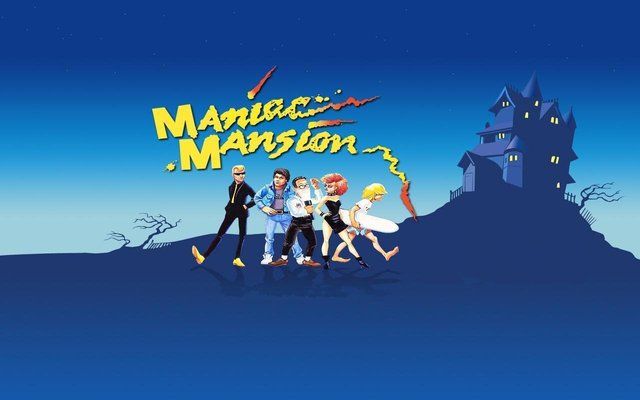
for the duration of Maniac Mansion's progress for the Commodore 64, Lucasfilm had censored profanity within the script: for example, the early line of dialogue "don't be a shit head" grew to become "do not be a tuna head".
Nevertheless, additional content material was removed from the NES variation to make it compatible for a more youthful audience, and to comply with Nintendo's insurance policies.
Jaleco united states president Howie Rubin warned Crockford about content to which Nintendo would object, such as the phrase "kill". After reading the NES game standards policy for himself, Crockford suspected that further elements of Maniac Mansion might be tricky, and he sent a record of questionable content material to Jaleco.
When the enterprise answered that the content used to be reasonable, Lucasfilm games submitted Maniac Mansion for approval.
One month later, Nintendo of the usa contacted Lucasfilm games to request the removing of offensive textual content and nude portraits.
Crockford censored this content however attempted to leave the sport's essence intact. For instance, Nintendo desired graffiti in a single room which provided an primary hint to avid gamers removed from the game.
Unable to conform with out at the same time taking away the hint, the staff easily shortened it. Sexually suggestive and otherwise "graphic" speak used to be edited, together with a remark from Dr. Fred about "beautiful brains [being] sucked out".
The nudity described via Nintendo encompassed a swimsuit calendar, a classical sculpture and a poster of a mummy in a Playmate pose.
After a short fight to hold the sculpture, the staff ultimately eliminated all three. The phrase "NES SCUMM" in the credit sequence was censored as well.
George "The fat Man" Sanger and his band contributed to the NES port's track.
Lucasfilm games re-submitted the edited variant of Maniac Mansion to Nintendo, which then manufactured 250,000 cartridges.
Each and every cartridge was geared up with a battery-powered again-up to retailer information.
Nintendo introduced the port by means of its legit journal in early 1990, and it provided additional protection later that yr.
The potential to microwave a hamster remained within the recreation, which Crockford mentioned as an example of the censors' contradictory standards.
however, Nintendo later seen it, and after the first batch of cartridges was sold, Jaleco used to be pressured to cast off the content from future shipments.
Late in development, Jaleco commissioned Realtime acquaintances to furnish background music, which no previous variation of Maniac Mansion had featured.
Realtime friends' founder and president David Warhol noted that "video games at that time needed to have 'wall to wall' track".
He brought in George "The fat Man" Sanger and his band, along with David Hayes, to compose the rating.
Their intention was to create songs that appropriate every personality, akin to a punk rock theme for Razor, an digital rock theme for Bernard and a variation of thin Lizzy's "The Boys Are again on the town" for Dave Miller. Warhol translated their work into NES chiptune track.
And so this is where we will stop for today, till i come your way again tomorrow, i remain my humble self @adexola
Thanks so much for reading through.
Thanks to @ambmicheal for the badge
